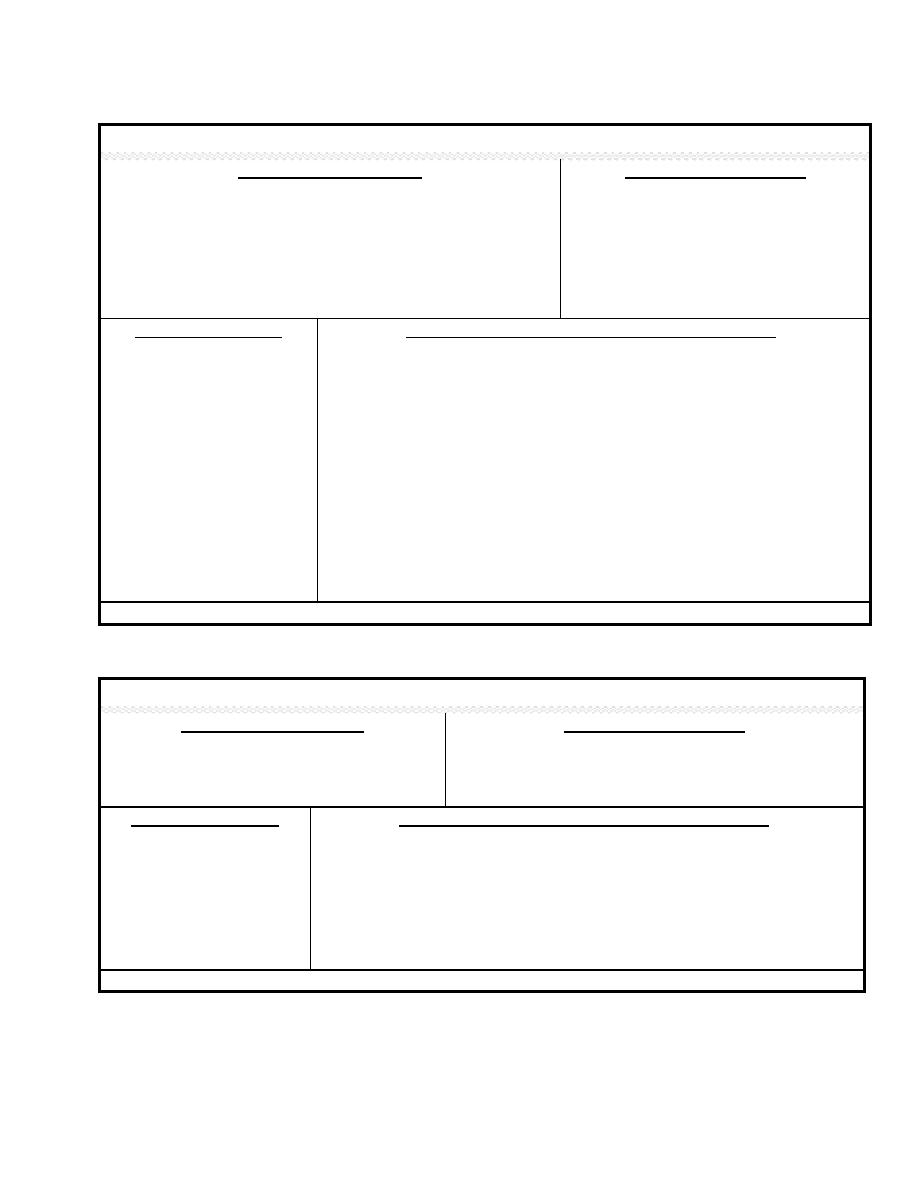 |
|||
|
|
|||
|
|
|||
| ||||||||||
|
|  AN/UPQ-3 Improved GUARDRAIL
SYSTEM PARAMETERS
SYSTEM DESCRIPTION
The AN/UPQ-3 consists of a Ground Tracker and an Airborne WideBand
Frequency: 9.6 9.95 GHz/
Data Link. The Ground Tracker utilizes a 1.8 m diameter cassegrain
14.5 15.5 GHz (Ground Tracker)
antenna and the Airborne Band utilizes a 20 cm diameter parabolic
15 15.35 GHz ( Airborne Band)
antenna.
Power: 70 W (Ground Tracker)
70 W (Airborne Band)
HAZARD CONTROLS (to reduce or eliminate risk)
SYSTEM HAZARDS
Power Density Levels (PDL) ....
This system is able to produce potentially hazardous PDLs in excess of the safety
standard. Establish a Nonionizing Radiation Protection Program (IAW guidelines
provided in this TB) .
Hazard distance from antenna ....
In the Ground Tracker nonscanning mode, exclude personnel to distances of 12 m from
the antenna. In the Airborne Band, exclude personnel to distances of 6 m from the
antenna.
Open/cracked waveguides ........
All open waveguides and the antenna radome produce potentially hazardous PDLs.
Exclude personnel to a distance of 50 cm from the antenna radome. Periodically inspect
waveguides for cracks or leaks and replace suspect waveguides.
Other..................................
Consult the equipment Technical Manual for other operator and/or maintenance hazards.
AN/URC-94 Radio Set
SYSTEM PARAMETERS
SYSTEM DESCRIPTION
The AN/URC-94 is a HF automatic tuned radio set
Frequency: 1.5 30 MHz; 30 80 MHz
Power: 100 W; 50 W
that utilizes a whip antenna.
SYSTEM HAZARDS
HAZARD CONTROLS (to reduce or eliminate risk)
Power Density Levels (PDL) ....
This system is not able to produce potentially hazardous PDLs in excess of the safety
standard.
RF shock/burn ....................
Observe standard RF shock precautions. Do not touch the antenna when energized.
Other................................
Consult the equipment Technical Manual for other operator and/or maintenance hazards.
Equipment - 147
|
|
Privacy Statement - Press Release - Copyright Information. - Contact Us |